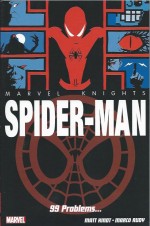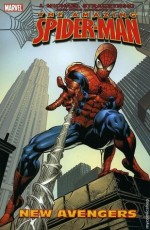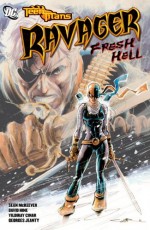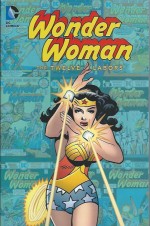
By Jerry Siegel, Curt Swan, Wayne Boring &Stan Kaye with Otto Binder, Robert Bernstein & Jerry Coleman (IDW Publishing Library of American Comics)
ISBN: 978-1-6137-7666-7
It’s indisputable that the American comicbook industry – if it existed at all – would have been an utterly unrecognisable thing without Jerry Siegel & Joe Shuster’s Superman. Their unprecedented invention was fervidly adopted by a desperate and joy-starved generation and quite literally gave birth to a genre if not an actual art form.
Spawning an impossible army of imitators and variations within three years of his 1938 debut, the intoxicating blend of eye-popping action and wish-fulfilment which epitomised the early Man of Steel grew to encompass cops-and-robbers crime-busting, socially reforming dramas, science fiction, fantasy, whimsical comedy and, once the war in Europe and the East sucked in America, patriotic relevance for a host of gods, heroes and monsters, all dedicated to profit through exuberant, eye-popping excess and vigorous dashing derring-do.
In comicbook terms Superman was master of the world. Moreover, whilst transforming the shape of the fledgling funnybook industry, the Man of tomorrow relentlessly expanded into all areas of the entertainment media.
Although we all think of Cleveland boys’ iconic creation as the epitome and acme of comicbook creation, the truth is that very soon after his debut in Action Comics #1 Superman became a fictional multimedia monolith in the same league as Popeye, Tarzan, Sherlock Holmes and Mickey Mouse.
We parochial and possessive comics fans too often regard our purest and most powerful icons in purely graphic narrative terms, but the likes of Batman, Spider-Man, Wonder Woman, X-Men, Avengers and Superman long ago outgrew their four-colour origins and are now fully mythologized modern media creatures instantly familiar in mass markets, platforms and age ranges…
Far more people have seen or heard the Man of Steel than have ever read his comicbooks. The globally syndicated newspaper strips alone reached untold millions. By the time his 20th anniversary rolled around at the very start of what we know as the Silver Age of Comics, he had been a thrice-weekly radio serial regular, starred in a series of astounding animated cartoons, two films and a novel by George Lowther.
He was a perennial success for toy, game, puzzle and apparel manufacturers and had just ended his first smash live-action television serial. In his future were three more shows (Superboy, Lois & Clark and Smallville), a stage musical, a franchise of blockbuster movies and an almost seamless succession of games, bubblegum cards and TV cartoons beginning with The New Adventures of Superman in 1966 and continuing ever since.
Even superdog Krypto got in on the small-screen act…
Although pretty much a spent force these days, for the majority of the last century the newspaper comic strip was the Holy Grail that all American cartoonists and graphic narrative storytellers hungered for. Syndicated across the country – and perhaps the planet – with millions, if not billions, of readers and generally accepted as a more mature and sophisticated form of literature than comic-books, it also paid better.
And rightly so: some of the most enduring and entertaining characters and concepts of all time were created to lure readers from one particular paper to another and many of them grew to be part of a global culture.
Mutt and Jeff, Flash Gordon, Dick Tracy, Buck Rogers, Charlie Brown and so many more escaped their humble tawdry newsprint origins to become meta-real: existing in the minds of earthlings from Albuquerque to Zanzibar.
Most still do…
So it was always something of a risky double-edged sword when a comic-book character became so popular that it swam against the tide (after all weren’t the funny-books invented just to reprint the strips in cheap accessible form?) to became a genuinely mass-entertainment syndicated serial strip.
Superman was the first original comicbook character to make that leap – almost as soon as he was created – but only a few have ever successfully followed. Wonder Woman, Batman (eventually) and groundbreaking teen icon Archie made the jump in the 1940s and only a handful like Spider-Man and Conan the Barbarian have done so since.
The daily Superman newspaper comic strip launched on 16th January 1939 and was supplemented by a full-colour Sunday page from November 5th of that year. Originally crafted by such luminaries as Siegel & Shuster and their studio (Paul Cassidy, Leo Nowak, Dennis Neville, John Sikela, Ed Dobrotka, Paul J. Lauretta & Wayne Boring) the mammoth task soon reqired the additional talents of Jack Burnley and writers like Whitney Ellsworth, Jack Schiff & Alvin Schwartz.
The McClure Syndicate feature ran continuously until May 1966, appearing at its peak in more than 300 daily and 90 Sunday newspapers, boasting a combined readership of more than 20 million. Eventually artists Win Mortimer and Curt Swan joined the unfailing Wayne Boring & Stan Kaye whilst Bill Finger and Seigel provided the stories, telling serial tales largely separate and divorced from comicbook continuity throughout years when superheroes were scarcely seen.
In 1956 Julie Schwartz opened the Silver Age with a new Flash in Showcase #4. Soon cosumed crusaders began returning en masse to thrill a new generation. As the trend grew, many companies began to experiment with the mystery man tradition and the Superman newspaper strip began to slowly adapt: drawing closer to the revolution on the comicbook pages.
As the Jet age gave way to the Space-Age, the Last Son of Krypton was a vibrant yet comfortably familiar icon of domestic modern America: particularly in the constantly evolving, ever-more dramatic and imaginative comicbook stories which had received such a terrific creative boost as super heroes gradually began to proliferate once more. Since 1954 the franchise had been cautiously expanding and in 1959 the Caped Kryptonian could be seen not only in Golden Age survivors Action Comics, Superman, Adventure Comics, World’s Finest Comics and Superboy but now also in Superman’s Pal Jimmy Olsen, Superman’s Girlfriend Lois Lane and soon Justice League of America.
Such increased attention naturally filtered through to the far more widely seen newspaper strip and resulted in a rather strange and commercially sound evolution…
After author and educator Tom De Haven’s impassioned Foreword, Sidney Friedfertig’s Introduction explains how and why Jerry Siegel was tasked with turning recently published comicbook tales into daily 3-and-4 panel continuities for the apparently more sophisticated and discerning newspaper audiences. This meant major rewrites, frequently plot and tone changes and, in some cases, merging two stories into one.
If you’re a fan, don’t be fooled: these stories are not mere rehashes, but variations on an idea for an audience perceived as completely separate from kids’ funnybooks.
Even if you are familiar with the comicbook source material, the adventures gathered here will read as brand new, especially as they are gloriously illustrated by Curt Swan and latterly Wayne Boring at the very peak of their artistic powers.
As an added bonus the covers of the issues those adapted stories came from have been added as a full nostalgia-inducing colour gallery…
The astounding everyday entertainment commences with Episode #107 from April 6th to July 11th 1959.
‘Earth’s Super-Idiot!’ by Siegel, Swan & Stan Kaye is a mostly original story which borrows heavily from the author’s own ‘The Trio of Steel’ (Superman #135, February 1960, where it was drawn by Al Plastino) detailing the tricks of an unscrupulous super-scientific telepathic alien producer of “Realies†who blackmailed Superman into making a fool and villain of himself for extraterrestrial viewers.
If the hero didn’t comply – acting the goat, performing spectacular stunts and torturing his friends – Earth would suffer the consequences….
After eventually getting the better of the UFO sleaze-bag, our hero returned to Earth with a bump and encountered ‘The Ugly Superman’ (July 13th–September 5th, first seen in Lois Lane #8 April 1959, written by Robert Bernstein and illustrated by Kurt Schaffenberger).
Here, the eternally on-the-shelf Lois agreed to marry a brutish wrestler, and the Man of Tomorrow, for the most spurious of reasons, acted to foil her plans…
Episode #109 ran from September 7th to October 28th 1959 and saw Superman reluctantly agree to try and make a dying billionaire laugh in return for the miserable misanthrope signing over his entire fortune to charity.
Some of the apparently odd timing discrepancies in publication dates can be explained by the fact that submitted comicbook stories often appeared months after they were completed, so the comicbook version of Siegel’s ‘The Super-Clown of Metropolis’ didn’t get published until Superman #136 (April 1960) where Al Plastino took the art in completely different directions…
‘Captive of the Amazons’ – October 29th 1959 to February 6th 1960 – combined two funnybook adventures both originally limned by Boring & Kaye. The eponymous equivalent from Action #266 (Jul 1960) was augmented by Bernstein’s tale ‘When Superman Lost His Powers’ (Action Comics #262) detailing how super-powered alien queen Jena came to Earth intent on making Superman her husband. When he refused she removed his Kryptonian abilities, subsequently trapping now merely mortal Clark with other Daily Planet staff in a lost valley of monsters where Lois’ suspicions were again aroused…
Episode #111 ran from 8th February – 6th April. ‘The Superman of the Future’ originated in Action #256 (September 1959, by Otto Binder, Swan & Kaye) and both versions seemingly saw Superman swap places with a hyper-evolved descendent intent on preventing four catastrophic historical disasters, but the incredible events were actually part of a devious hoax…
Superman’s Girlfriend Lois Lane #10 (July 1959 by Siegel & Schaffenberger) offered up a comedy interlude as ‘The Cry-Baby of Metropolis’ (April 7th to May 28th) found Lois – terrified of losing her looks – exposing herself to a youth ray and rapidly regenerating into an infant, much to the amusement of arch-rival Lana Lang and Superman…
Episode #113 May 30th – July 2nd featured ‘The Super-Servant of Crime’ (by Bernstein, from Superman #130, July 1959) which saw the hero outsmarting a petty crook who had bamboozled the Action Ace into granting him five wishes, after which ‘The Super-Sword’ (4th July to August 13th and originally by Jerry Coleman & Plastino for Superman #124, September 1958) pitted the Kryptonian Crimebuster against a ancient knight with a magic blade which could penetrate his invulnerable skin. Once more, however, all was not as it seemed…
Siegel, Boring & Kaye’s epic ‘Superman’s Return to Krypton’ from Superman #141, November 1960) was first seen in daily instalments from August 15th to November 12th 1960, telling a subtly different tale of epic love lost as an accident marooned the adoptive Earth hero in the past on his doomed home-world. Reconciled to dying there with his people, Kal-El befriended his own parents and found love with his ideal soul-mate Lyla Lerrol, only to be torn from her side and returned to Earth against his will in a cruel twist of fate.
The strip version here is one of Swan’s most beautiful art jobs ever and, although the bold comicbook saga was a fan favourite for decades thereafter, the restoration of this more mature interpretation might have some rethinking their decision…
Wayne Boring once more became the premiere Superman strip illustrator with Episode #116 (November 14th – December 31st), reprising his and Siegel’s work on ‘The Lady and the Lion’ from Action #243 August 1958, wherein the Man of Steel was transformed into an inhuman beast by a Kryptonian émigré the ancients knew as Circe…
Siegel then adapted Bernstein’s ‘The Great Superman Hoax’ and Boring & Kaye redrew their artwork for the Episode (January 2nd – February 4th 1961) which appeared in Superman #143, February 1961, and saw a cunning criminal try to convince Lois and Clark that he was actually the Man of Might, blissfully unaware of who he was failing to fool.
Then February 6th to March 4th had Superman using brains as well as brawn to thwart an alien invasion in ‘The Duel for Earth’ which originally appeared as a Superboy story in Adventure Comics #277 (October 1960) by Siegel & George Papp.
Superman #114 (July 1957) and scripter Otto Binder provided Siegel with the raw material for a deliciously wry and topical tax-time tale ‘Superman’s Billion-Dollar Debt’ – March 6th to April 8th – wherein an ambitious IRS agent presented the Man of Steel with an bill for unpaid back-taxes, whilst Episode #120 (April 10th – May 13th) introduced ‘The Great Mento’ (from Bernstein & Plastino’s yarn in Superman #147, August 1961): a tawdry showbiz masked mind-reader who blackmailed the hero by threatening to expose his precious secret identity… Â
The final two stories in this premiere collection both come from Superman’s Girlfriend Lois Lane – issues #24, April and #26, July respectively – and both were originally crafted by Bernstein & Schaffenberger.
In ‘The Perfect Husband’ (15th May to July 1st), begun and ended by Boring but with Swan pinch-hitting for 2 weeks in the middle, Lois’ sister Lucy tricks the journalist into going on a TV dating show where she meets her ideal man, a millionaire sportsman and war hero who looks just like Clark Kent.
Then ‘The Mad Woman of Metropolis’ finds Lois driven to the edge of sanity by a vengeance-hungry killer, a rare chance to see the girl-reporter and shameless butt of so many male gags show her true mettle by solving the case without the Man of Tomorrow’s avuncular, often patronising assistance…
Superman: – The Silver Age Dailies 1959-1961 is the first in a series of huge (305 x 236mm), lavish, high-end hardback collections starring the Man of Steel and a welcome addition to the superb commemorative series of Library of American Comics which has preserved and re-presented in luxurious splendour such landmark strips as Li’l Abner, Tarzan, Little Orphan Annie, Terry and the Pirates, Bringing Up Father, Rip Kirby, Polly and her Pals and many of the abovementioned cartoon icons.
If you love the era, these stories are great comics reading, and this is a book you simply must have.
Superman ™ and © 2013 DC Comics. All Rights Reserved.











